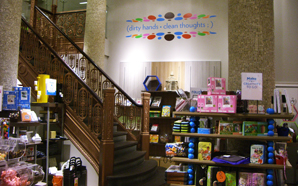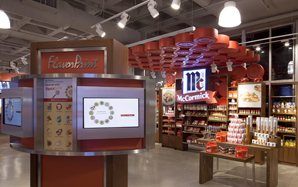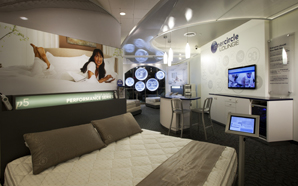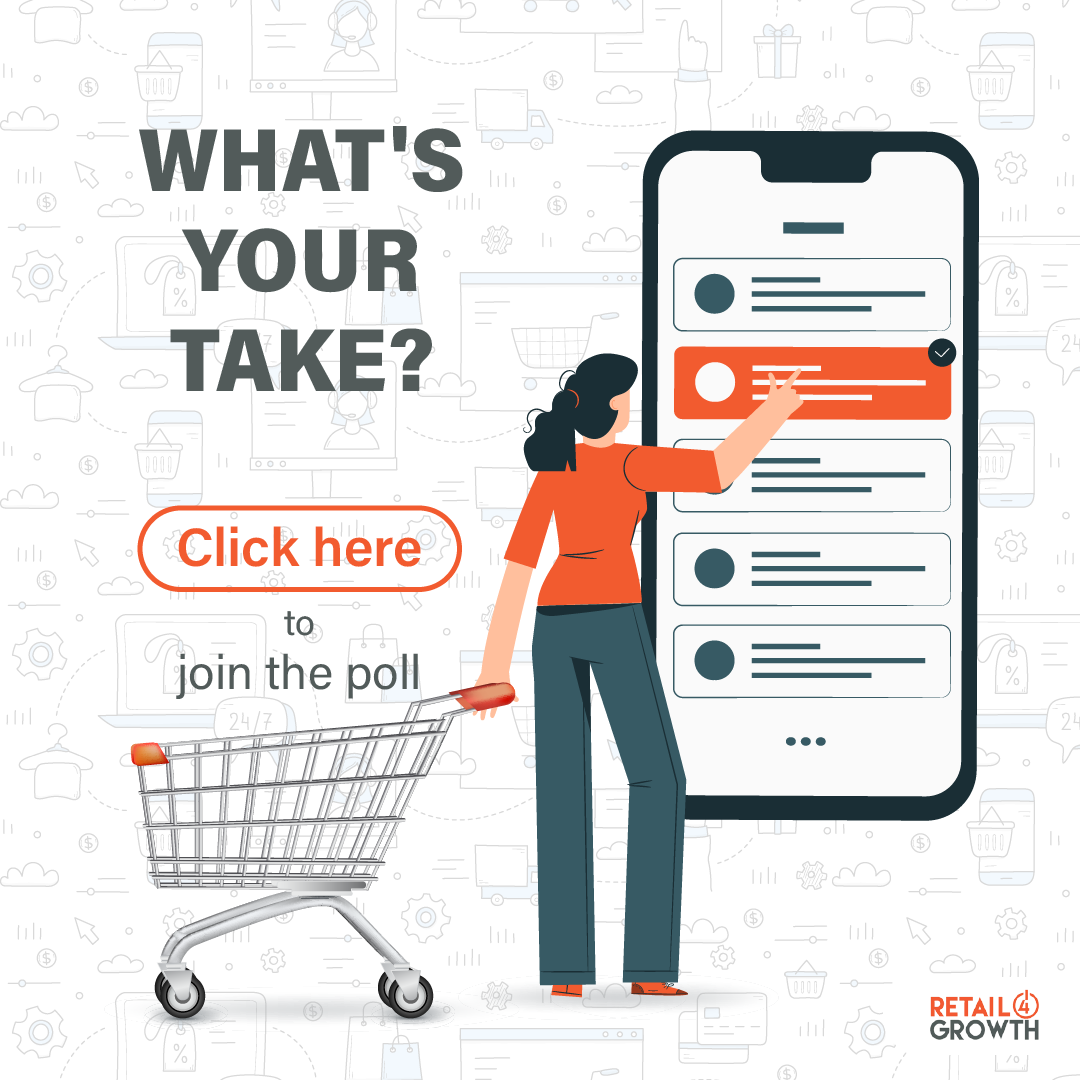Home » Viewpoints » Be Experiential: Three Ways to Beat Showrooming
Be Experiential: Three Ways to Beat Showrooming
By Dipanjan Mukherjee | June 25, 2013
Ken Nisch, Chairman of JGA shares his views on how embracing the reality, implementing an Omnichannel focus, and Integrating Mobile Technology can help retailers combat the challenges of consumer Showrooming.
 Showrooming, much like many other perceived threats in retail must be seen as an opportunity, not as a negative. Arguably, the challenges that showrooming has created for retailers are relative to price transparency, finding a place and role within the consumer's mind that will be superior to the online retailer (remembering that many online retailers can offer broader assortments, 24/7 convenience, and shopping accessibility). And with the peak shopping time for most online retailers actually during office hours -- very often immediately after lunch; this is something that the brick-and-mortar retailer unfortunately can't compete with, and reminds us of the old adage, "It is better to join them than to fight them."
Showrooming, much like many other perceived threats in retail must be seen as an opportunity, not as a negative. Arguably, the challenges that showrooming has created for retailers are relative to price transparency, finding a place and role within the consumer's mind that will be superior to the online retailer (remembering that many online retailers can offer broader assortments, 24/7 convenience, and shopping accessibility). And with the peak shopping time for most online retailers actually during office hours -- very often immediately after lunch; this is something that the brick-and-mortar retailer unfortunately can't compete with, and reminds us of the old adage, "It is better to join them than to fight them."With the tools that they currently have in hand, particularly through mobile, it is inevitable that the consumers will not only find ways today, but will increasingly find opportunities to buy in the future - and at the best price. There will always be consumers who only measure price when looking at products, particularly branded products that are universal, easy to compare and contrast based on model number or type, and where the brand value of products being purchased in many cases is as important, or even more essential than the place which the products are purchased at. This is particularly important in the categories that include consumer electronics, books, cosmetics, and branded fashion.
Yet in these same categories, the consumer's need for trial, knowledge and engagement, as well their interest and need for social contact and context during the purchase process, make these categories the exact ones that can be most influenced by an effective retail experience.
 Embrace the Reality
Embrace the RealityThe first point of the basics is "Embrace the Reality." The hours and energy that corporate resources spend to argue "denial" are understandable, yet that is the most dangerous reaction to showrooming. The thoughts around "creating imaginary force fields" that defeat the consumer's access to online information, bait and switch strategies, and even activities to create confusion around model numbers, specifications, etc. are all shortsighted. Not only will they not effectively prevent showrooming, but they will erode the consumer's confidence and trust in the retailer who now will be seen as "the enemy" versus the friend.
In Embracing the Reality and looking toward ways in which the retailer can enrich and reinforce their relationship with the consumer through the showroom activity is critical. Research has shown interestingly enough that consumers who have had effective and helpful showrooming activities are highly likely to buy from the retailer, and will buy more by consolidating both their online and in-store activities with the retailer. Consumers also report more favorably though their social network on the value that the progressive retailer has taken. This is particularly interesting and true with highly active bloggers, and in many cases where male bloggers are seen as "influencers;" not only to their immediate social network, but to those who read and respect their advice. There is a second adage that fits this Embrace, "Keep your friends close and your enemies closer". The embracing of showrooming hits this issue head on by making it into an opportunity versus a challenge.
 Omnichannel
OmnichannelThe next point to consider in combatting showrooming is to begin to think less siloed and more Omnichannel. Omnichannel is a term that is gaining rapid acceptance among the retail community who have found their best consumers from a life-purchase perspective. They tend to be the customer who not only doesn't simply shop one channel or the other, but who shops across a rich variety of channels at different occasions, and does so across the widest variety of categories and products when finding the right Omnichannel partner.
In many cases the retailer is the biggest barrier to their own Omnichannel retailing, through archaic commission and credit protocols that deprive one or the other channels for credit in making the sale. They often jealously guard their consumer information by channel, versus creating a rich and multi-dimensional relationship with the consumer through Omnichannel thinking. This impacts the store environment in many ways. Rather than isolating the consumer's access to online information, sometimes even competitive information, can make this a focal point of the retail experience.
This can be accomplished by creating interactive digital elements within product displays through the use of tablet (or iPad) formats. Through training, retailers can also encourage their sales associates to expose the customer to the full breadth of inventory whether it is actually housed in-store or remotely, as part of their purchase choices. Clearly, the intent should always be to conclude the sale in-store whenever possible, or if the primary channel at the time is online, but to do so in a way that integrates both opportunities. One of the big changes in looking at the showrooming concept is focused on order online and pick up in store.
In many cases, the store inventory can provide more near-term accessibility to products for last minute purchase; another way to provide further trial and sampling of the product. But most importantly, it typically provides an additional purchase occasion by the consumer who has ordered online, picked up in-store, and now may be exposed to the wide variety of accessories and add-on purchases that will make their online purchase even more satisfying. This might impact the actual merchandising of the store, making the transaction position, within some cases multiple positioning, or pick up purchase positioning planned as part of the selling system.
One global optical retailer allows consumers to build a virtual tray of eyewear, set an appointment in-store to view the eyewear, of course with the store providing additional choices beyond the consumer-defined selections relative to trade up options, sunglasses, cases, etc. to expand the purchase potential. Another retailer, who specializes in personalized products, provides certain gift enhancements, i.e. wrapping, bags and even PWP's (purchase-with-purchase) opportunities in-store, where the online purchase and in-store pickup qualifies the consumer for certain special offers at the time of pickup.
In both cases the retailer reports significant purchase attachment to this online purchase in-store pickup option that would exist in either a pure online and/or in-store purchase activity.
 Integrating Mobile Technology
Integrating Mobile TechnologyIncreasingly retailers are using mobile as way to expose consumers to new products, social network endorsements of their peers, and entertainment related to available product. Yet in most cases we are not seeing major translation of mobile activity into direct purchase activity, i.e. purchasing with your mobile device.
However, what have found is that mobile provides huge opportunities for integrating your store experience through in-store connections -- be it driving location-specific promotional activities based on customer proximity to store locations. Even then, we are not seeing too much of in-store experiences providing activities for customers to engage their social networking. They could provide everything from fitting room trial of fashion of products, to in-store QR coding and/or near-field communication using the consumers' mobile device as the access point. Retailers might use the information from mobile devices for looking up customer's previous purchase behavior - to customers Tweeting a photo from the store modeling their favorite new outfit.
Embracing the Reality, implementing an Omnichannel focus, and Integrating Mobile Technology can help you combat the challenges of consumer Showrooming. Put these tools to work for your future store success!
Kenneth Nisch is chairman of JGA, a retail design and brand strategy firm in Southfield, Michigan. Nisch applies his knowledge and entrepreneurial insight to create concept and prototype development and brand image positioning. JGA's clients include Parx (India), Fantasy World (Kuwait), Cacau Show (Brazil), Hershey's, Whole Foods Market, Museum of Arts and Design, McCormick World of Flavors, Destination XL, Sleep Number and Verizon. Ken may be reached at 1.248.355.0890 or info@jga.com. For more information, visit www.JGA.com.
Advertisement
Related Viewpoints
Advertisement









Comments